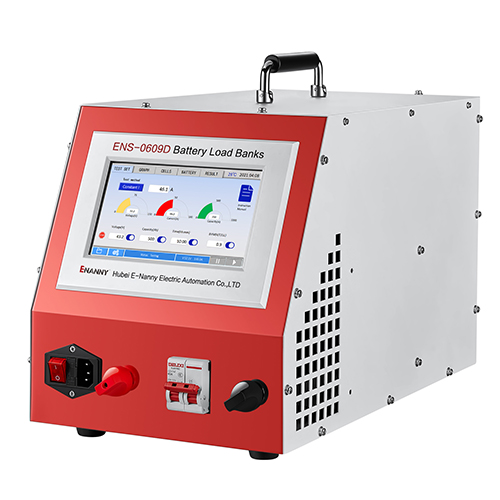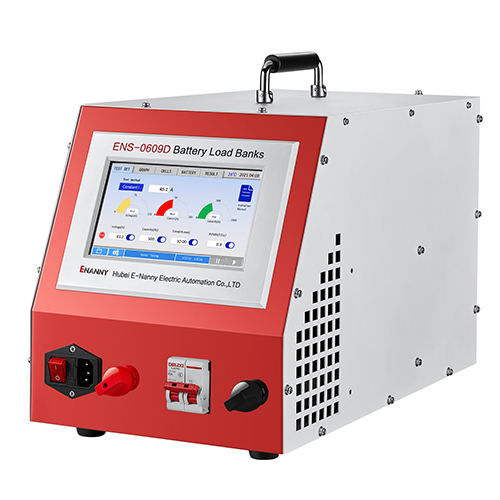Nowadays, when many people use batteries, they must first test whether the battery power is normal. All the indicators and parameters of a good battery meet the standards. Especially now that new energy vehicles are promoted, the requirements for batteries are even higher. Then, how to test battery charge, let Australia E-Nanny Electric factory explain the following two methods for your reference.

How to test the battery power?
method 1:
1) To charge the battery, it is originally intended to calculate the charging capacity of the battery by detecting the battery voltage Vbat;
2), but after the 5V adapter is connected, the main control board will output 4.2V Vbat, and the battery power is already 100% at this time
The parameter expressing the energy storage capacity of a lithium-ion battery (hereinafter referred to as a lithium battery) is the energy density, which is roughly equivalent to the product of the voltage and the capacity of the lithium battery. method to achieve the goal.
However, due to the nature of the raw materials used, there is always a limit to the increase in capacity, so increasing the voltage value has become another way to improve the storage capacity of lithium batteries.
As we all know, the nominal voltage of lithium batteries is 3.6V or 3.7V, and the highest voltage is 4.2V. So, why can't the voltage of lithium batteries get a greater breakthrough? After all, this is also determined by the materials and structural properties of lithium batteries.
The voltage of a lithium battery is determined by the electrode potential. Voltage, also known as potential difference or potential difference, is a physical quantity that measures the energy difference of charges in an electrostatic field due to different potentials. The electrode potential of lithium ions is about 3V, and the voltage of lithium batteries varies with different materials.

For example, the rated voltage of a general lithium battery is 3.7V, and the fully charged voltage is 4.2V; while the rated voltage of a lithium iron phosphate battery is 3.2V, and the fully charged voltage is 3.65V. In other words, the potential difference between the positive and negative electrodes of a practical lithium battery cannot exceed 4.2V, which is a requirement based on materials and safety of use.
If the Li/Li+ electrode is used as the reference potential, μA is the relative electrochemical potential of the negative electrode material, μC is the relative electrochemical potential of the positive electrode material, and the electrolyte potential interval Eg is the lowest electron unoccupied energy level and the highest electron occupation energy of the electrolyte level difference. Then, the three factors that determine the maximum voltage value of the lithium battery are μA, μC, and Eg.
The difference between μA and μC is the open circuit voltage (highest voltage value) of the lithium battery. When this voltage value is within the Eg range, the electrolyte can be guaranteed to work normally.
"Normal operation" means that the lithium battery moves back and forth between the positive and negative electrodes through the electrolyte, but does not undergo redox reactions with the electrolyte, thereby ensuring the stability of the battery structure. There are two forms of abnormal operation of the electrolyte caused by the electrochemical potential of the positive and negative materials:
1) When the electrochemical potential of the negative electrode is higher than the lowest electron unoccupied energy level of the electrolyte, the electrons of the negative electrode will be captured by the electrolyte, so the electrolyte will be oxidized, and the reaction product will form a "solid-liquid interface layer" on the surface of the negative electrode material particles , resulting in possible damage to the negative electrode.
2) When the electrochemical potential of the positive electrode is lower than the highest electron occupation energy level of the electrolyte, the electrons in the electrolyte will be captured by the positive electrode and oxidized by the electrolyte, and the reaction product will form a "solid-liquid interface layer" on the surface of the positive electrode material particles , resulting in possible damage to the positive electrode.
However, the possibility of damage to the positive or negative electrode is due to the existence of the "solid-liquid interface layer" which prevents the further movement of electrons between the electrolyte and the positive and negative electrodes, and instead protects the electrode material, that is to say, to a lesser extent The "solid-liquid interface layer" is "protective".
The premise of this protection is: the electrochemical potential of the positive and negative electrodes can slightly exceed the Eg range, but not too much. For example, the current lithium battery anode materials are mostly made of graphite.
It is because the electrochemical potential of graphite relative to the Li/Li+ electrode is about 0.2V, which is slightly beyond the Eg range (1V~4.5V), but because of the "protective" "solid-liquid interface layer".

The electrolyte is not further reduced, thereby stopping the further development of the polarization reaction. However, the 5V high-voltage cathode material exceeds the Eg range of the current commercial organic electrolyte too much, so it is easily oxidized during the charge and discharge process. As the number of charge and discharge increases, the capacity decreases and the life span decreases.
Now I understand that the open circuit voltage of the lithium battery is chosen to be 4.2V because the Eg range of the existing commercial lithium battery electrolyte is 1V~4.5V.
If the open circuit voltage is set to 4.5V, it may be possible to increase the output power of the lithium battery, but it also increases the risk of battery overcharging, and the hazards of overcharging have been explained by quite a lot of information, so I won’t say more here.
According to the above principles, if people want to increase the energy density of lithium batteries by increasing the voltage value, there are only two ways to find, one is to find an electrolyte that can match the high voltage positive electrode material, and the other is to protect the surface of the battery modified.
Use the BAV-1 voltage tester to measure the no-load voltage of the battery.
Add a 15Ω resistance load to the BAV-1 voltage tester, work for 5S, and read the load voltage of the battery.
After one day, discharge the battery with E-Nanny battery discharge tester to check the battery capacity. For 3.0V and 3.6V disposable lithium-ion batteries, set the discharge current to 30mA, the cut-off voltage to 2V, without interruption.
How to test battery charge?
Method 2:
To measure the power of the battery, we can use a professional battery charge and discharge tester, such as ENS-3002DC Battery Charge and Discharge Tester to measure, we use it to measure the load condition of a single battery, if the animal battery pointer capacity gauge is lower than The red scale, that is, 10.5V, means that the battery is faulty. In addition, we can also use the Battery Charge and Discharge Tester to detect the discharge time of the battery. We can use the battery after charging it with a charger until the green light is turned on. The discharge detector has carried out the discharge detection, and then can judge the power of the battery. For the discharge time of more than 120 minutes, it means that the power of the battery is 100%; if the discharge time is only 60 minutes, it means that the capacity of the battery is 50%.
 English
English
 Español
Español
 Português
Português
 русский
русский
 français
français
 日本語
日本語
 Deutsch
Deutsch
 Tiếng Việt
Tiếng Việt
 Italiano
Italiano
 Nederlands
Nederlands
 Pilipino
Pilipino
 Türk
Türk
 Gaeilge
Gaeilge
 عربى
عربى
 Indonesia
Indonesia
 norsk
norsk
 čeština
čeština
 Ελληνικά
Ελληνικά
 فارسی
فارسی
 தமிழ்
தமிழ்
 Српски
Српски
 Català
Català
 עִברִית
עִברִית
 Galego
Galego
 Беларус
Беларус
 Hrvatski
Hrvatski
 ជនជាតិខ្មែរ
ជនជាតិខ្មែរ
 Кыргыз тили
Кыргыз тили
 O'zbek
O'zbek
 Lëtzebuergesch
Lëtzebuergesch
 ไทย
ไทย
 Polski
Polski
 한국어
한국어
 Svenska
Svenska
 magyar
magyar
 Malay
Malay
 বাংলা
বাংলা
 Dansk
Dansk
 Suomi
Suomi
 हिन्दी
हिन्दी
 български
български
 ລາວ
ລາວ
 Latine
Latine
 Қазақ
Қазақ
 Euskal
Euskal
 Македонски
Македонски
 Lietuvos
Lietuvos
 Eesti Keel
Eesti Keel
 Română
Română
 मराठी
मराठी




